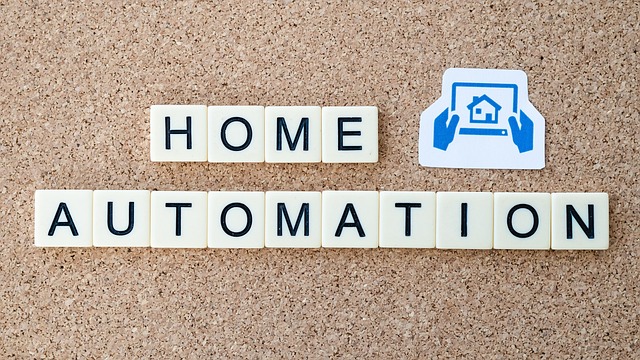In the era of the Internet of Things (IoT), smart home automation has become increasingly popular, offering convenience, energy efficiency, and enhanced security. Artificial Intelligence (AI) plays a pivotal role in making these smart homes truly intelligent, allowing devices to learn from user behavior, adapt to preferences, and automate tasks seamlessly. While there are numerous paid AI tools available for smart home automation, there’s also a range of free options that can empower homeowners to transform their living spaces without breaking the bank.
Introduction to Smart Home Automation
Smart home automation involves the integration of various devices and systems within a home to enable centralized control and automation. This includes lighting, thermostats, security cameras, door locks, entertainment systems, and more. The goal is to enhance comfort, convenience, efficiency, and security while reducing energy consumption and costs.
Benefits of Smart Home Automation
Smart home automation offers several benefits, including:
- Convenience: Users can control various devices from a single interface, such as a smartphone or voice commands.
- Energy Efficiency: Automated systems can optimize energy usage by adjusting lighting, heating, and cooling based on occupancy and preferences.
- Security: Smart home security systems provide real-time monitoring, alerts, and remote access to enhance home security.
- Cost Savings: By optimizing energy usage and reducing wastage, smart home automation can lead to cost savings over time.
Components of a Smart Home
Key components of a smart home include:
- Sensors: Detect changes in the environment, such as motion, temperature, and light.
- Actuators: Devices that perform actions based on input from sensors, such as turning lights on/off or adjusting thermostat settings.
- Controllers: Centralized hubs or software platforms that coordinate communication between devices and enable automation.
- User Interfaces: Interfaces through which users interact with smart home systems, such as smartphone apps, voice assistants, or touch panels.
Role of Artificial Intelligence in Smart Home Automation
Artificial Intelligence enhances smart home automation by enabling devices to analyze data, learn from user behavior, and make intelligent decisions. AI algorithms can detect patterns, predict preferences, and optimize settings to personalize the user experience.
Machine Learning Algorithms
Machine learning algorithms play a crucial role in AI-powered smart home automation. These algorithms analyze data from sensors and user interactions to identify patterns and make predictions. For example, a smart thermostat can learn the user’s schedule and adjust temperature settings accordingly to optimize energy usage.
Natural Language Processing (NLP)
NLP enables voice-controlled smart home devices to understand and respond to natural language commands. Devices equipped with NLP can interpret spoken instructions, such as “turn off the lights in the living room,” and execute the corresponding actions.
Computer Vision
Computer vision technology enables smart home security cameras to recognize faces, detect motion, and analyze visual data in real-time. This allows for more accurate surveillance, automated alerts, and enhanced security features.
Free AI Tools for Smart Home Automation
While there are numerous paid AI platforms and solutions for smart home automation, several free tools and resources are available for homeowners who want to experiment with AI-driven automation without incurring additional costs.
OpenHAB
OpenHAB is an open-source home automation platform that integrates with various devices and protocols, allowing users to create customized automation rules. While OpenHAB itself is not AI-specific, it supports integration with AI tools and services, such as machine learning frameworks, enabling users to implement AI-driven automation scenarios.
Home Assistant
Home Assistant is another popular open-source home automation platform that offers extensive support for integrating smart devices and services. It provides a user-friendly interface for creating automation scripts and supports various AI integrations, such as TensorFlow for machine learning tasks.
Node-RED
Node-RED is a visual programming tool that allows users to wire together devices, APIs, and online services in a flow-based manner. While not specifically AI-focused, Node-RED can be used to create sophisticated automation flows that leverage AI capabilities through integrations with machine learning libraries and services.
TensorFlow Lite
TensorFlow Lite is a lightweight version of Google’s TensorFlow machine learning framework designed for mobile and embedded devices. It enables developers to deploy machine learning models directly on smart home devices, allowing for on-device inference and real-time decision-making without the need for cloud connectivity.
Practical Applications of AI in Smart Home Automation
AI-driven smart home automation can be applied to various use cases to enhance comfort, convenience, and efficiency for homeowners.
Adaptive Lighting Control
AI algorithms can analyze user preferences, occupancy patterns, and natural light levels to adjust lighting settings dynamically. For example, lights can automatically dim or turn off in unoccupied rooms, or color temperature can be adjusted based on the time of day to promote relaxation or productivity.
Predictive Climate Control
Smart thermostats equipped with AI can learn the user’s schedule, occupancy patterns, and temperature preferences to optimize heating and cooling settings. By predicting when occupants will be home and adjusting temperature settings accordingly, AI-driven climate control systems can maximize comfort while minimizing energy consumption.
Intelligent Security Systems
AI-powered security cameras and sensors can detect unusual activity, identify potential threats, and alert homeowners in real-time. Advanced computer vision algorithms can distinguish between familiar faces and unknown individuals, enabling more accurate surveillance and proactive security measures.
Challenges and Considerations
While AI offers significant potential for enhancing smart home automation, there are several challenges and considerations that homeowners should be aware of.
Privacy and Data Security
AI-driven smart home devices collect and process vast amounts of data, raising concerns about privacy and data security. Homeowners should carefully consider the implications of sharing sensitive information with third-party AI platforms and ensure that proper security measures are in place to protect their personal data.
Compatibility and Interoperability
Integrating AI tools and services with existing smart home devices and systems may require careful planning to ensure compatibility and interoperability. Homeowners should verify that AI solutions are compatible with their devices and protocols before implementing them to avoid compatibility issues and potential conflicts.
Conclusion
AI-powered smart home automation offers homeowners unprecedented convenience, efficiency, and security by leveraging advanced machine learning algorithms, natural language processing, and computer vision technology. While there are numerous paid AI solutions available, homeowners can also explore a range of free tools and resources to experiment with AI-driven automation without incurring additional costs. By harnessing the power of AI, smart homes can adapt to user preferences, optimize energy usage, and enhance security to create a truly intelligent living environment.






